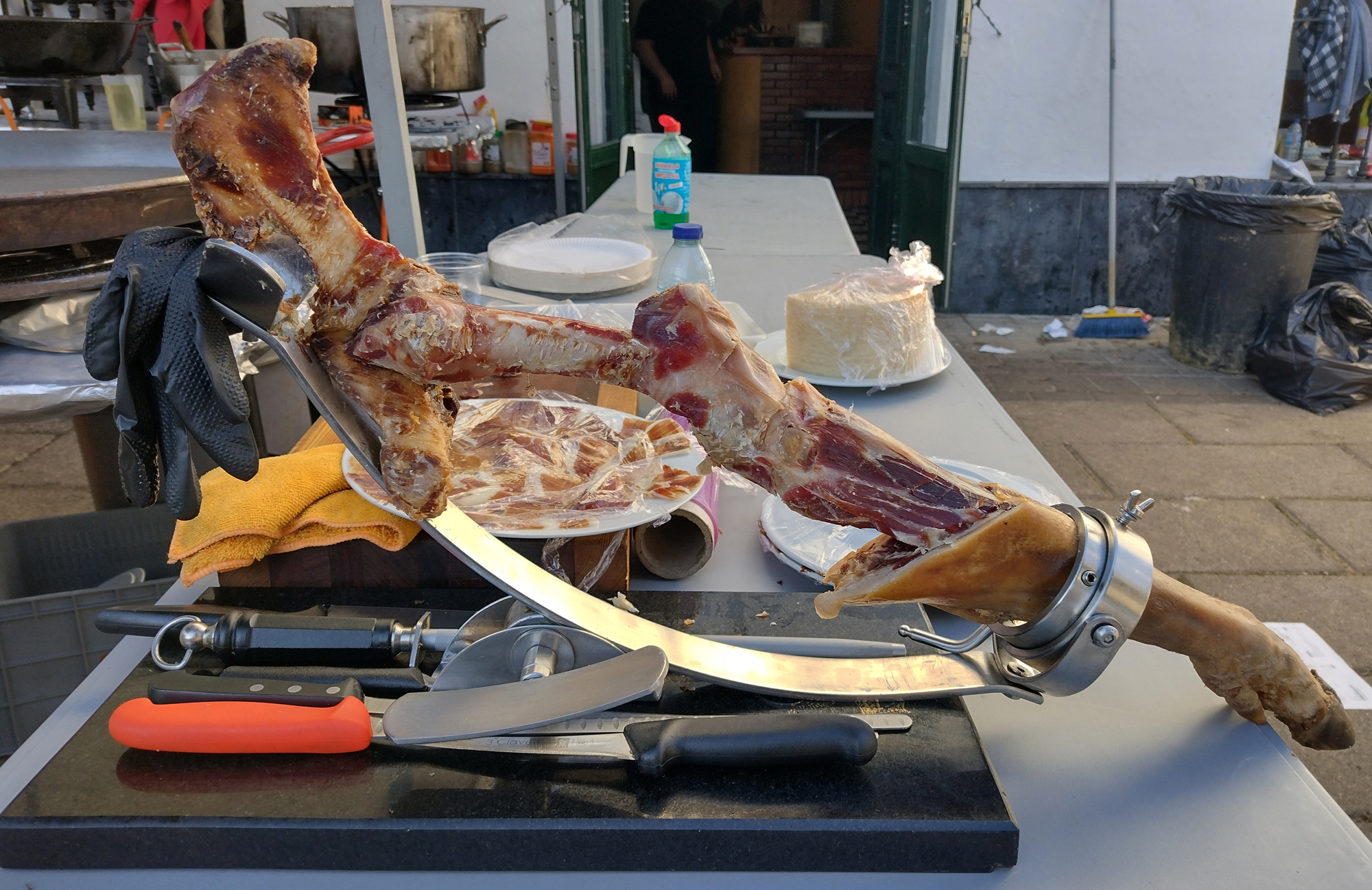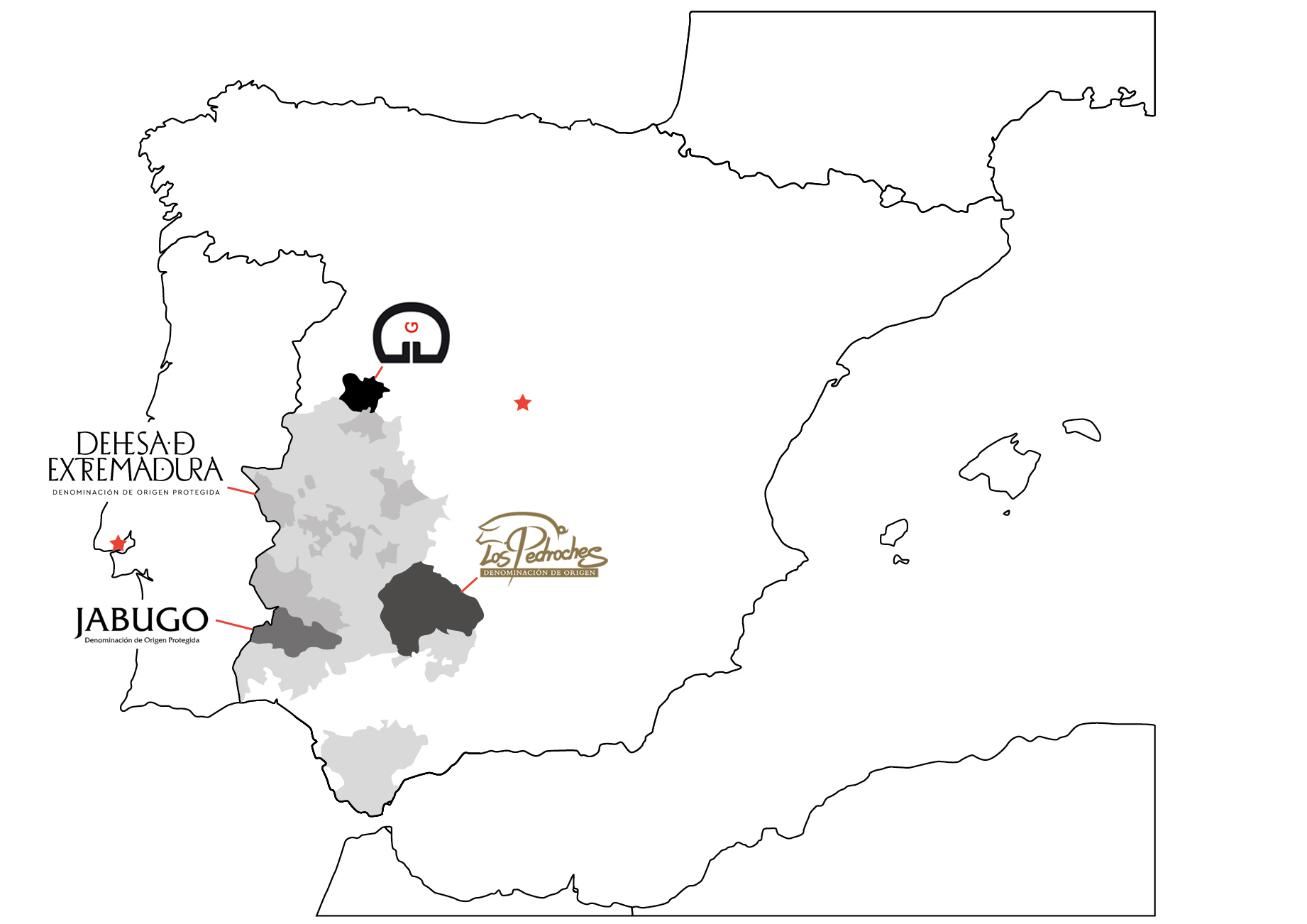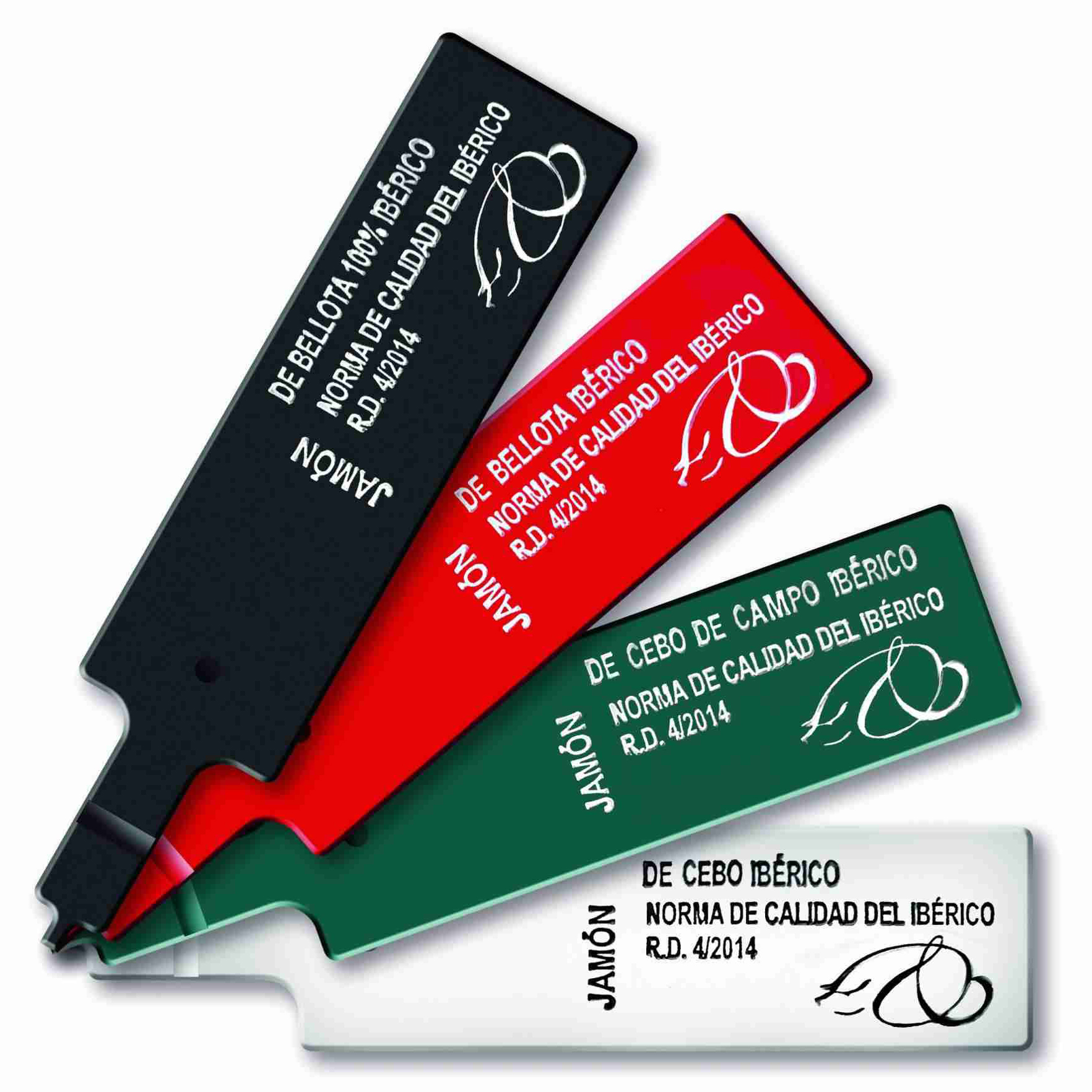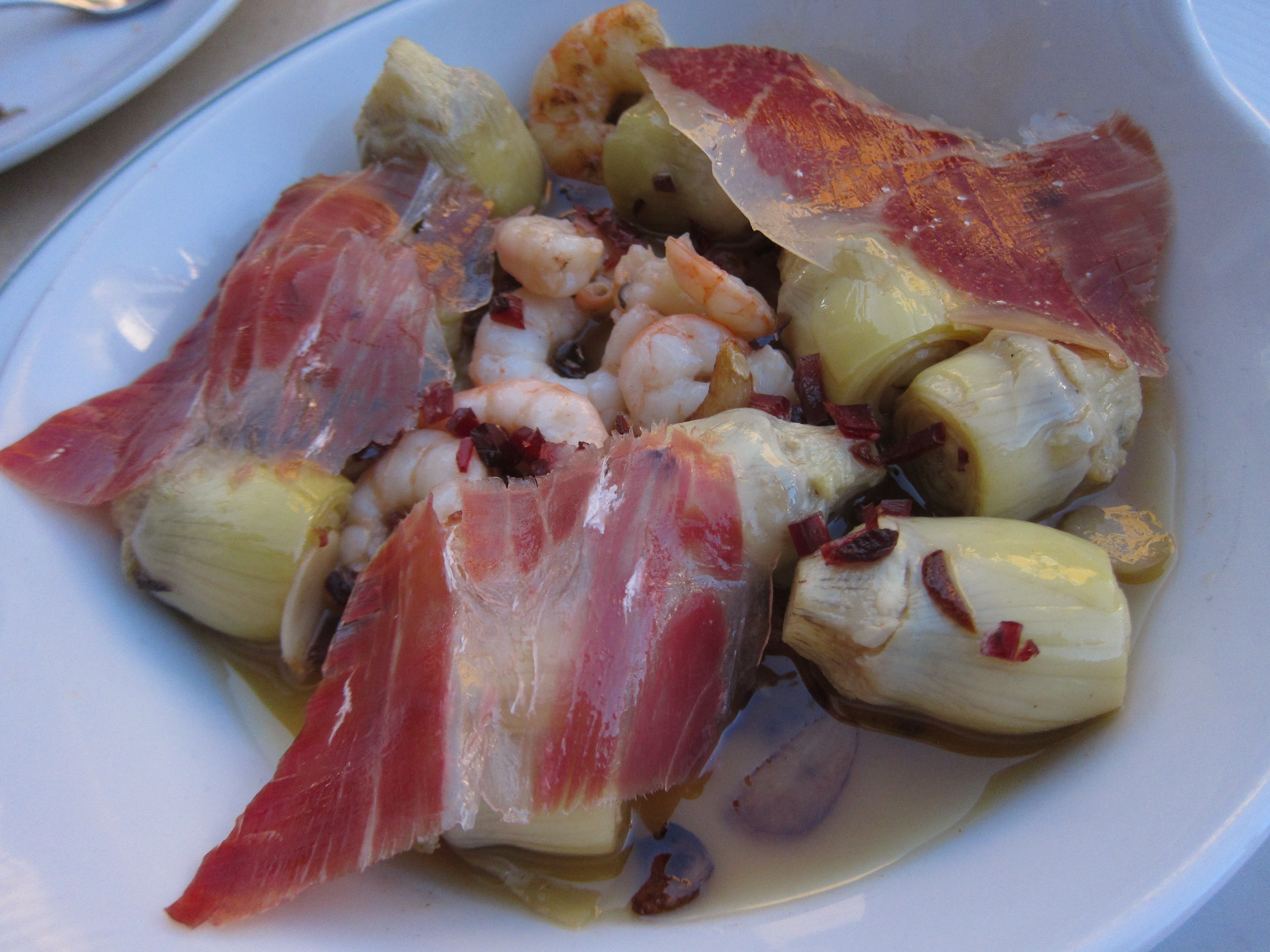
Jamón is so important to Spanish cuisine that it can be found lurking in almost everything. But with so much of this tasty product available, what makes ibérico so special? Is it truly worth the price? You bet. Let’s start with that gorgeous animal first…
Special breed
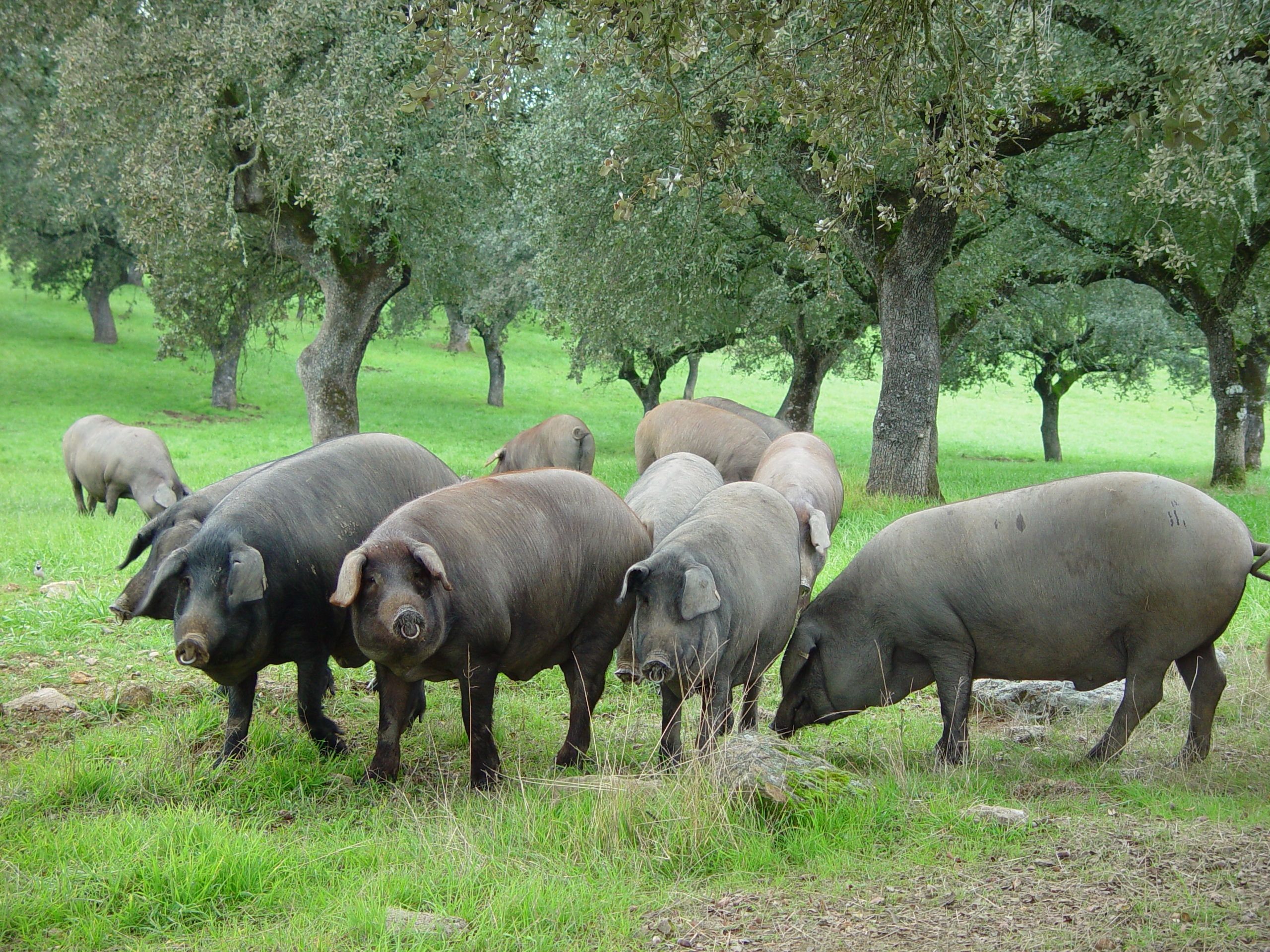
Native to the Mediterranean, the Iberian pig has a unique characteristic: its perfect adaption to grazing in rough terrain. Genetically mixed with the wild boar in Phoenecian times, fat is stored not only underneath the skin but also between muscle fibers… key for flavor & texture. By freely grazing & roaming the countryside, the Iberian pig has developed more slender & stronger hooves as well.
At birth, pigs weigh a little over one kilo. Mothers stop feeding newborns after about 45 days when piglets begin eating grass & herbs —having already grown to 12-15 kg! Their constant search for food helps develop muscle. Females can grow to 100-150 kg while males can reach up to 200 kg. Skin color ranges from grey to black, & they have black-, red- or even blonde-colored hair… but often so little fuzz that their skin color is typically what we see from a distance.
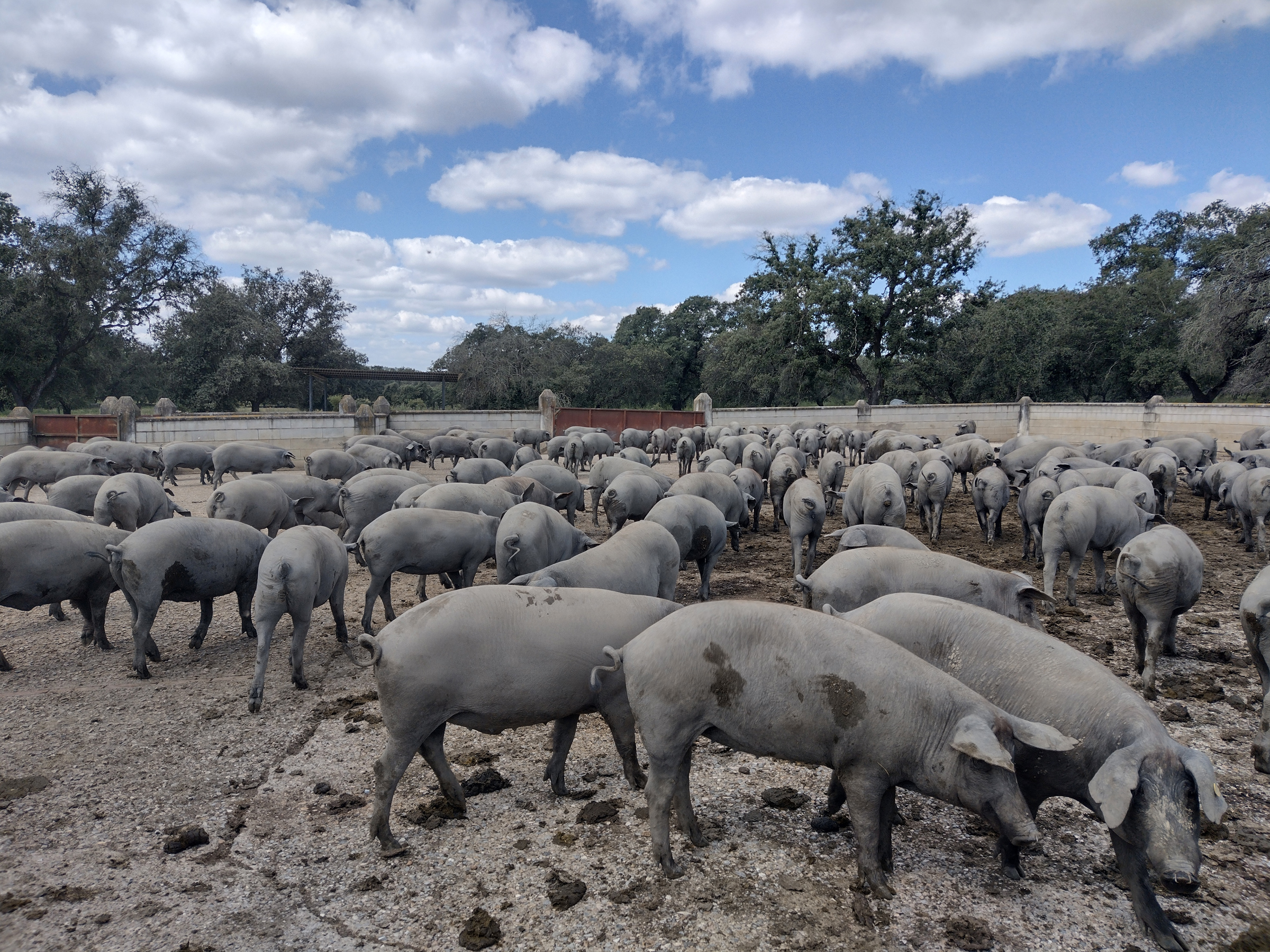
Acorns begin to fall from holm oak, gall oak & cork oak trees at the end of October, when pigs have an almost limitless buffet within easy reach. Natural instinct leads them to search out the more difficult-to-graze areas first while they are strong & agile, leaving the flat, open areas for eating in February after they’ve fattened up. Those pigs know exactly what they’re doing!
During these months of the montonera, every 100 kg of acorns a pig eats will convert into 10 kg of weight gain. Of course they eat grains & grasses as well, but the majority of their nutrients come from energy-packed acorns. Sacrifice is traditionally at the end of the all-you-can-eat feast during the coldest months of winter. Cold weather helps prevent heat from spoiling any part of the 16-month old pig after the matanza.
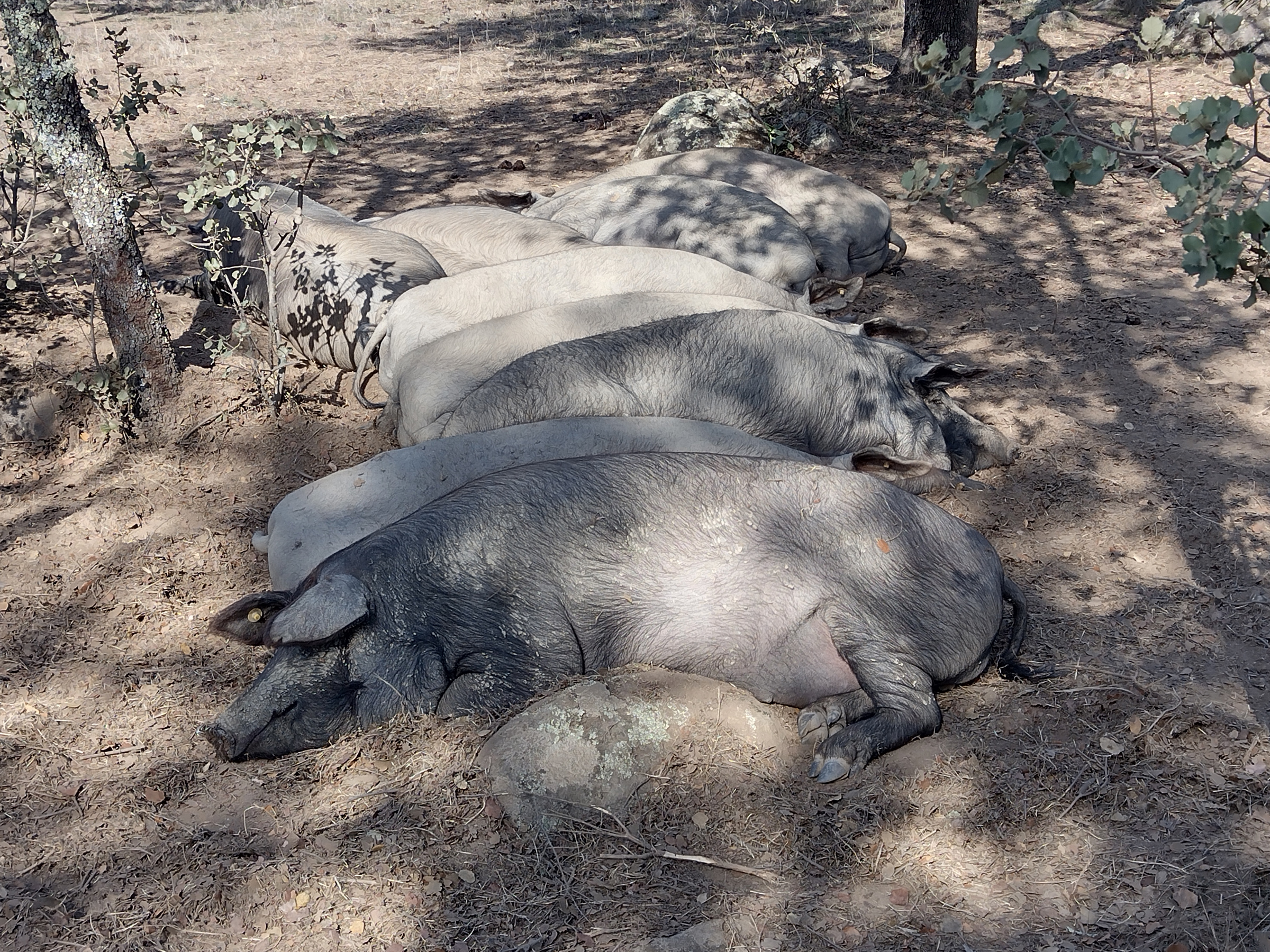
Curation
But this wonderful product doesn’t make it to your neighborhood bar right away. The next critical step is conservation by salt curing. Coarse salt completely covers the front legs (known as paleta – with higher fat content, less meat & more economical) or hind legs (this is jamón – the best, most prized cut & often double the price of paleta) for 10 days at a frosty temperature of 1-5º C. Next, salt is washed away with warm water & natural mold is allowed to grow on the surface for 40 days at a slightly higher temperature. From January to August, the drying process takes place & legs are said to “sweat.” Intramuscular fat penetrates into the muscle giving us an acorn flavor bomb.
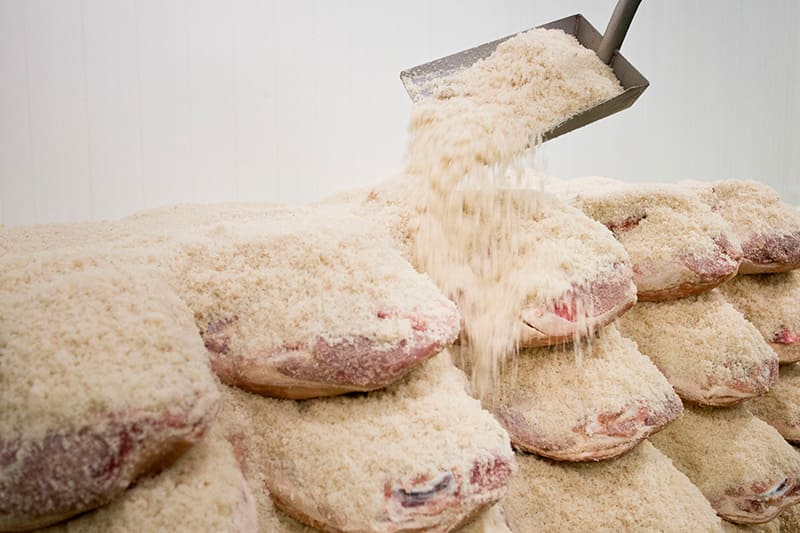
Ageing takes place from 20-24 months minimum, depending on total weight. Top jamón producers can often tell when a leg is ready to be sold just by looking at the color. However, the most accurate method involves taking a short, pointed & polished piece of horse or cow bone (a material that doesn’t retain odors) & piercing the jamón, removing the tool & smelling the tip (la técnica de la cala). Experts test the firmness of the interior when the cala is inserted, then detect by smell any aromas that would identify a faulty curing process.
Serving
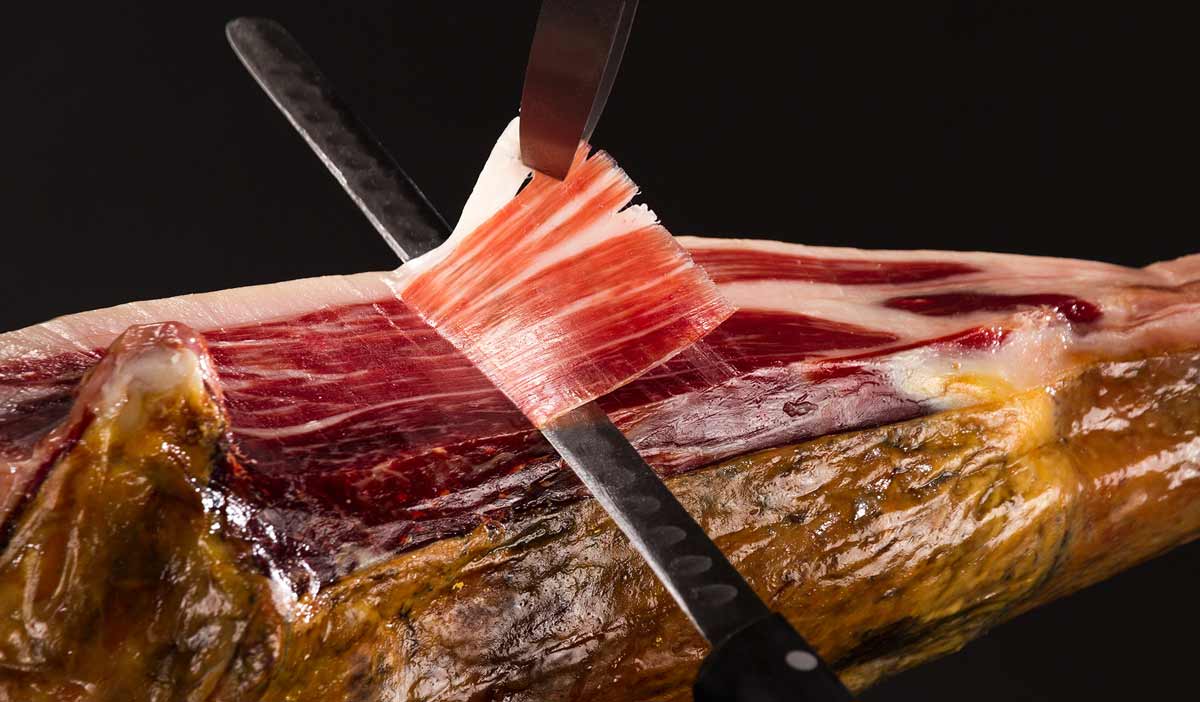
Slicing jamón is an art unto itself. Practice makes perfect, & there are many national competitions to see who’s the best. Keep in mind that machine-sliced jamón can lower the price somewhat. A thin, almost transparent slice with a balanced mix of fat & flesh —smaller than a credit card & lifted gracefully with small, metal tongs— is meant to be eaten in a single bite. This is finger food. Many also accompany a bite with bread or picos.
Give the delicate flavors a chance to mingle in your mouth & savor the experience. If you’ve purchased refrigerated, pre-sliced, vacuum-sealed jamón, be sure to open the package & let it come to room temperature at least 15 minutes before consuming… that makes the perfect bite easier to melt in your mouth.
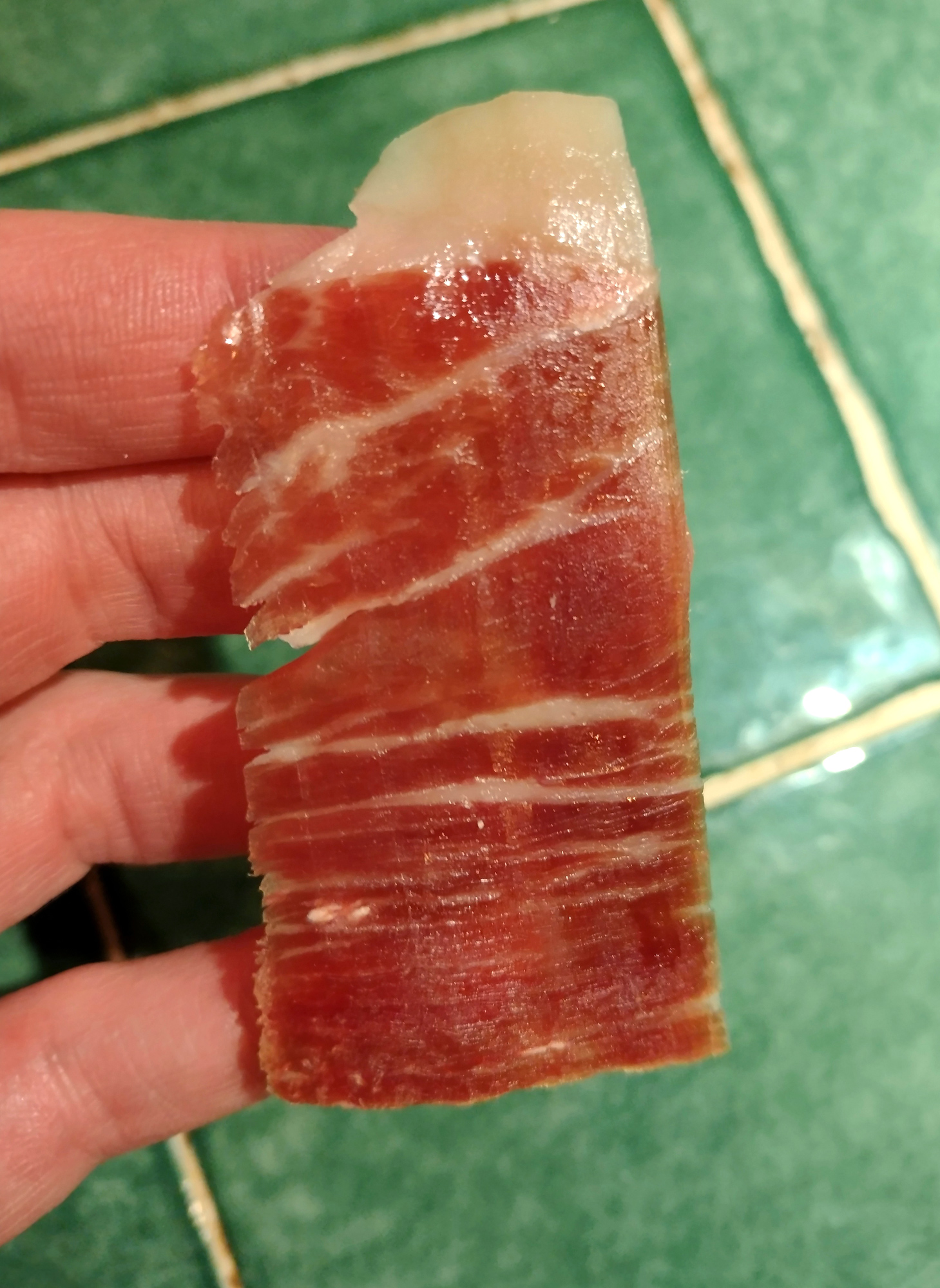
Once cut on a special holder (jamonero), the entire leg should be consumed within one month. That’s a lot of pork to eat! While not a problem for bars & restaurants, one way to conserve a leg at home is to remove large portions & store them vacuum-packed in the refrigerator. Local butchers often offer this service for a fee if your carving skills are rusty.
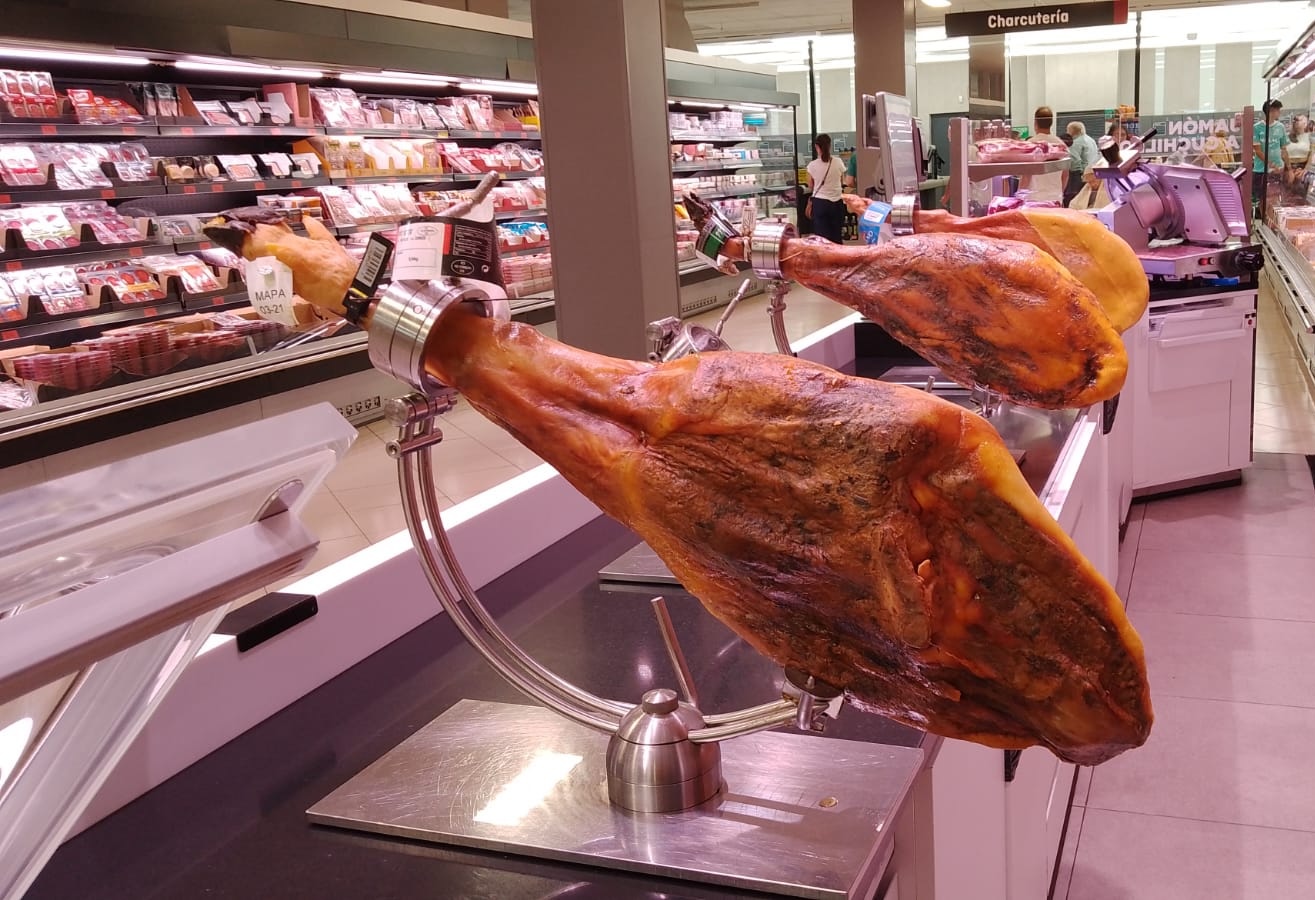
In bars, that plastic cone stuck into the bottom of a hanging leg is to catch the occasional drip of fat that might sweat off on an ultra-hot day… no one wants to dodge drips while having a drink 😉 And as with most of Spanish cuisine, nothing goes to waste; when there’s not enough to make a decent slice, portions can be cut into small cubes to add to dishes like salmorejo. Any open section is usually covered with its own fat, then a cloth to keep the jamón as fresh as possible. Even the bone is cut into sections for use in soups or cooked with potatoes to add a salty, meaty, umami flavor.
You get what you pay for… so if you’re looking for a splurge, try the best jamón you can find. Top quality legs often go for around 300-500€, but fortunately a small taste of the good stuff —while expensive— is a good splurge. 25 g per person is often adequate for a good sample.
Quality control
With so many steps in this extended production process, quality control is a must. If you’re charging top euro, consumers need assurance that their money is well spent. Spain follows the European Union’s classification system for food & wine of DOP, IGP & ETG… lots of initials but easy to understand:
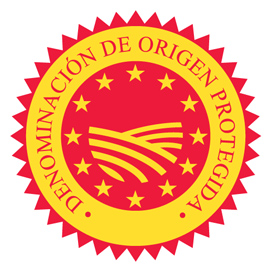
DOP · Demoninación de Origen Protegida, or Protected Designation of Origin, refers to a product from a specific place whose tastiness derives specifically from something in the area. Also, any production or processing occurs in that same region. There is often a regulatory council set up to ensure the quality of both product & production. Spain currently has a total of 215 DOPs (about half for wine & the other half for foodstuffs… for example, products like olive oil, bread, cheese, fruits & honey).
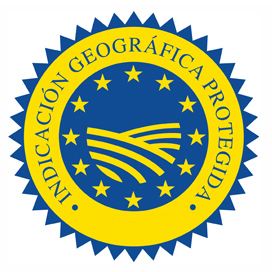
IGP · Indicación Geográfica Protegida, or Protected Geographical Indication, refers to a specific place where either the product comes from or where the processing occurs. Think of DOP as an “and” whereas IGP is an “or”, meaning one or the other is assured. There are 171 IGPs (more for food than wine or spirits) at the moment.
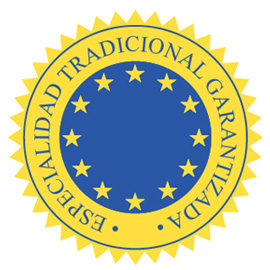
ETG · Especialidad Tradicional Garantizada, or Traditional Specialty Guaranteed, refers to a product or process that is traditional but not linked to a specific place. Only 2 ETGs for now in Spain (jamón serrano & tortas de aceite). We’ll come back to that type of jamón in a bit…
Top producers & tags
Labels for quality control are designed to be intuitive, & they are good to keep in mind while perusing for pork. But for top quality jamón ibérico, there are only four DOPs to remember… each with their own special logo. Consider a taste test of them all!
- Guijuelo – Composed of 78 municipalities near Salamanca, this area became Spain’s first jamón ibérico DOP in 1986. Pigs are raised over an enormous area of 11 neighboring provinces.
- Dehesa de Extremadura – Organized in 1990, over a million hectares scattered between the provinces of Badajoz & Cáceres comprise this DOP… filled with many special microregions.
- Jabugo – Initially called the DOP of Huelva in 1998, most consumers identified quality production only from the town of Jabugo. In 2017, the official name changed to Jabugo for better branding. The lightest grey areas on the map above, even in the separated southern province of Cádiz, are used for the montonera.
- Los Pedroches – Newest DOP for jamón, demarcated in 2003, where pigs can feast in the largest area of continuous oak forest in southern Europe (around 300,000 hectares).
To further help (or perhaps confuse!) consumers, The Ministry of Agriculture developed a colored tag system in 2014 to certify not only the breed of pig but also how they were raised:
- Black – Bellota 100% Ibérico · Known as pata negra or “black hoof”, purebred Iberian pigs that are free-range & acorn-fed
- Red – Bellota Ibérico · Mixed breed, free-range animals that are acorn-fed
- Green – Cebo de Campo Ibérico · Mixed breed, free-range animals that are never acorn-fed
- White – Cerdo Ibérico · Mixed breed animals that are feed-fed & kept inside; most DOP producers do not use this tag
A great way to understand how breed & feed can make a pronounced difference in the final product is by doing a vertical tasting from one single DOP producer. Start with the black tag & work your way down.
That other jamón
Hopefully what makes this amazing natural product so unique is now a bit easier to understand. And once you’ve had a taste… there’s no going back! However, most of us don’t have the means to eat jamón ibérico except on special occasions.
One of the ETG quality control categories in Spain has been awarded to jamón serrano, what most of us eat here on a somewhat daily basis. While the curation & ageing process are exactly the same as for jamón ibérico, the major difference is the breed of pig & lack of an acorn diet. Some are free range, some aren’t. But that doesn’t mean jamón serrano isn’t tasty in its own right. The concept is exactly the same with wine; a less expensive bottle can still be perfect for the moment while not being top tier.
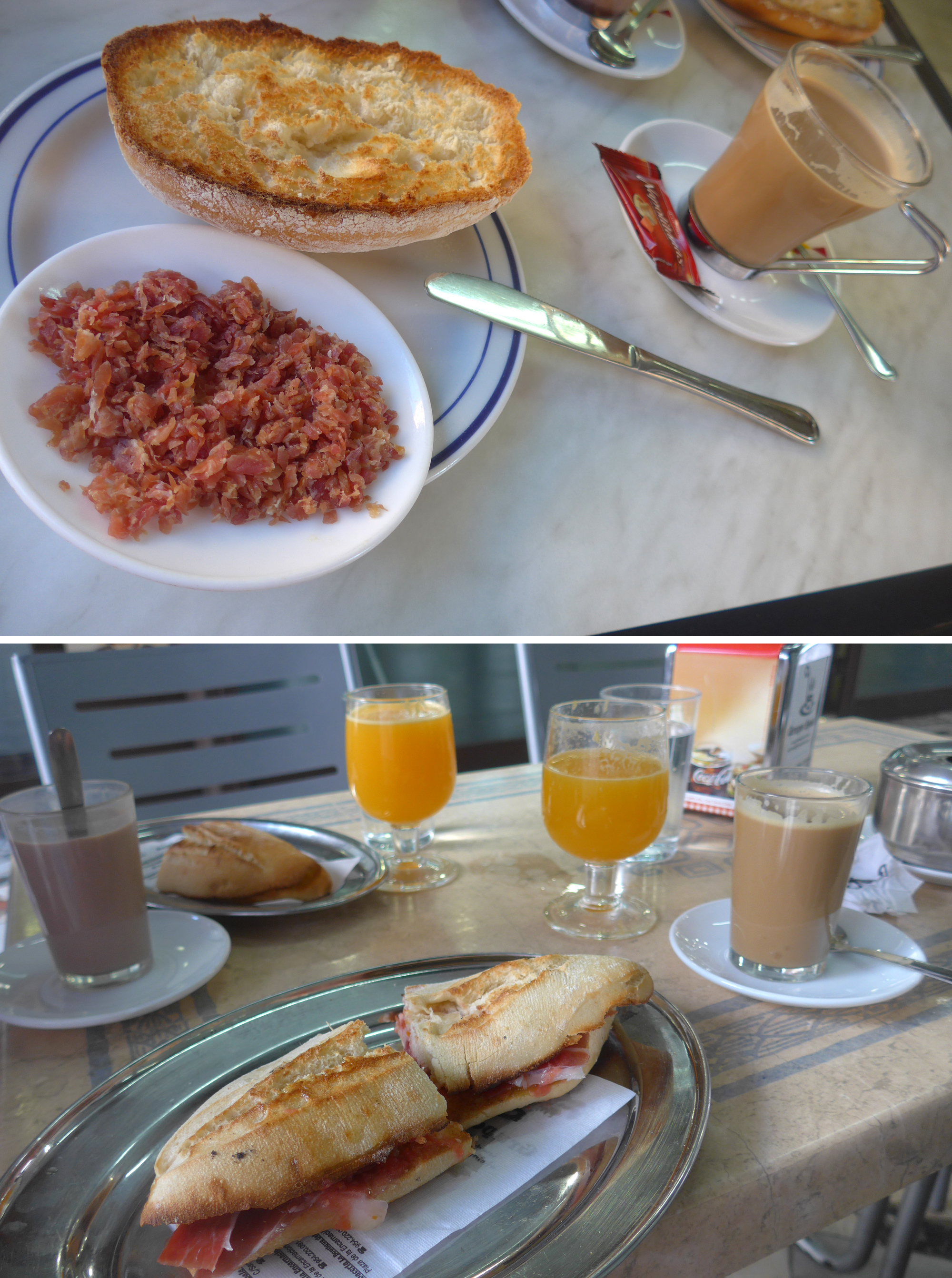
Ready to try the good stuff? Let me know in the comments section below if you have a favorite producer. We’re always looking to have a little more jamón!
